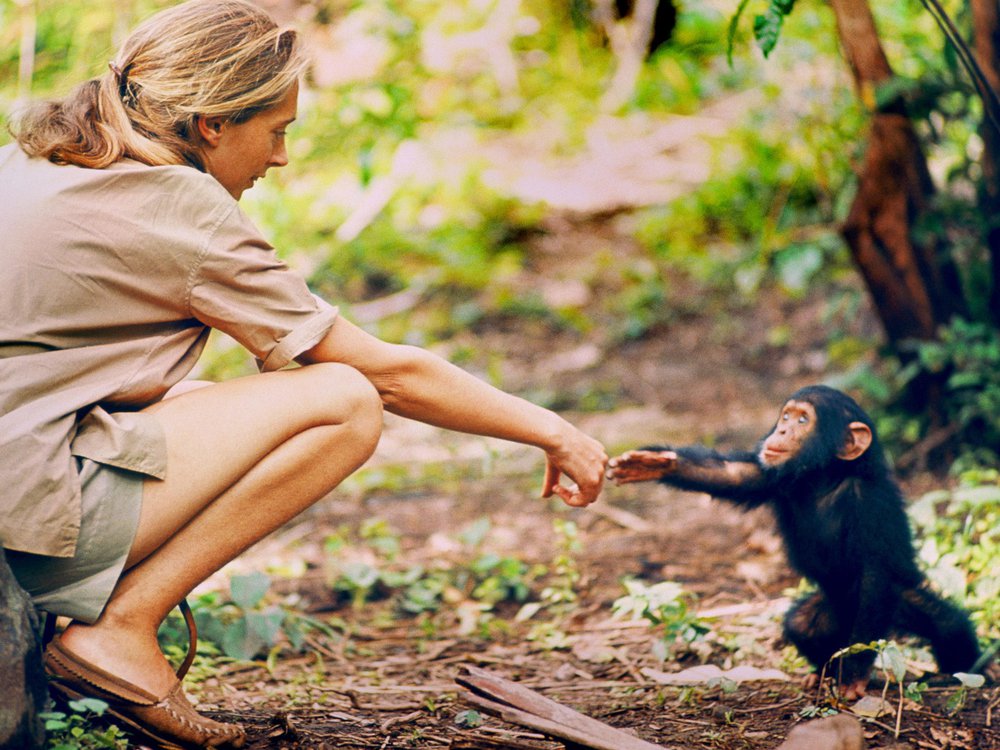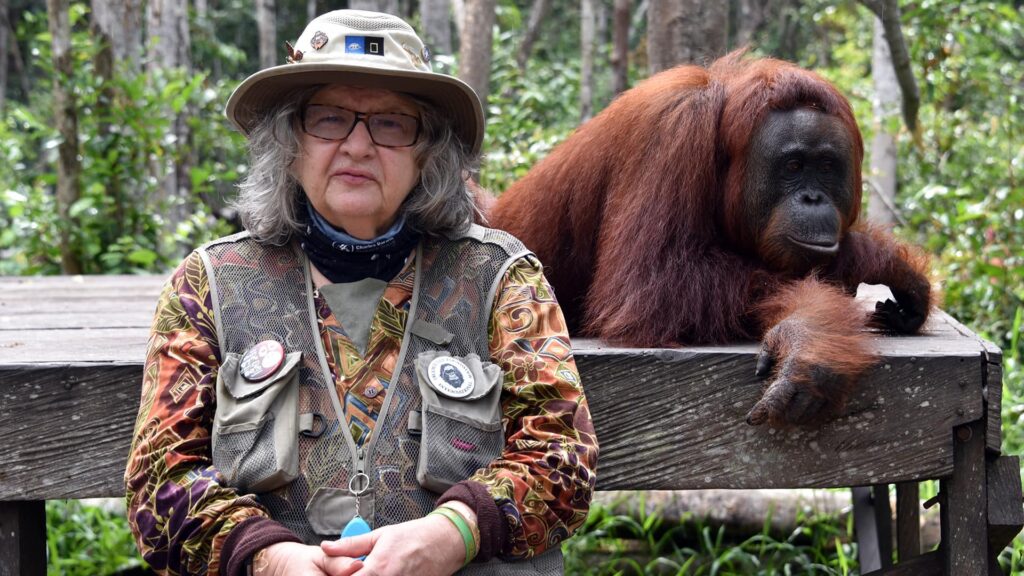Wild About the Trimates
Today, Jane Goodall is a household name associated with not only the conservation of chimpanzees, but with protecting nature around the world. Originally, however, Goodall was one of three women recruited by anthropologist Louis Leakey to study the great apes—chimpanzees, mountain gorillas, and orangutans.

Collectively known as the Trimates, Jane Goodall, Dian Fossey, and Biruté Galdikas were unusual choices to lead major research projects. Neither Goodall nor Fossey had formal training in primatology and Galdikas was just out of graduate school. In addition, having women lead research expeditions into the jungles of Africa and Indonesia was viewed with skepticism by many researchers and government officials. Nevertheless, all three would make significant scientific discoveries about these animals, and to increase the understanding of the need to conserve these amazing creatures.
Jane Goodall began her research in Gombe Stream National Park in Tanzania in 1960. Many of her research methods were unconventional and controversial. She identified her subjects with names, rather than numbers, which was the standard at the time. She also interacted directly with the chimps, gaining their trust and ultimately being included as a member of one troop. Despite the criticism from the scientific community, Goodall got results, observing new behaviours such as tool use, evidence of human-like emotions, and complex social structures.

Goodall’s work was physically and emotionally taxing. Not only did she have to trek through dense jungle to find the chimpanzees, the unfamiliar climate was rainy and humid, and fever was a regular occurrence. In addition, political unrest was common in the area, and at one point, rebels kidnapped several of Goodall’s research students. The Gombe Research Centre that she established continues to be a base for primate research. For the past twenty years, Goodall has dedicated most of her time to promoting conservation of wildlife and habitats around the world.
Several years after Jane Goodall established her research station in Gombe National Park, Louis Leakey recruited Dian Fossey to study mountain gorillas. In 1967, Fossey set up her research station in the Virunga Mountains of Rwanda. Working conditions in Virunga were even more inhospitable than those Goodall faced in Gombe. The station was at an altitude of almost 10,000 feet, in dense, wet, muddy jungle. In addition, Fossey’s health was poor, and she was frequently ill.

Despite these challenges, Fossey made significant discoveries about gorilla social dynamics and vocalizations. Unfortunately, poaching of gorillas was common in Rwanda and several of Fossey’s gorillas were killed by illegal hunting. In response, Fossey attempted to defend the gorillas, creating a very confrontational relationship with the local people. It is likely this sequence of events that led to her murder at the hands of poachers in 1985.
It took Biruté Galdikas seven months of trekking through the swampy jungles of Indonesia before she even saw an orangutan. Once she found them, she expanded our knowledge of these exclusive animals, documenting the lengthy and involved relationships between young orangutans and their mothers and their vegetarian diets. Despite having the lengthiest tenure as a researcher, Galdikas is the least well-known member of the Trimates, likely because of her focus on field research and on-the-ground conservation efforts such as tree-planting. She continues to be involved in orangutan research today.

Goodall, Fossey, and Galdikas have inspired other women to become scientific researchers. Before them, male perspectives dominated behavioural research. The Trimates changed not only the approach to animal research, but the nature of the research questions that were being asked.
In their own ways, each of these women are also fierce advocates for the conservation of primates and the natural world. The international foundations they founded protect primates around the world.





